Royal Navy Battlecruisers: HMS Renown and HMS Repulse
Royal Navy Battlecruisers HMS Renown and HMS Repulse
HMS Renown

(NARA Photo)
HMS Renown in 1945.
HMS Renown was the lead ship of her class of battlecruisers of the Royal Navy built during the First World War. She was originally laid down as an improved version of the Revenge-class battleships. Her construction was suspended on the outbreak of war on the grounds she would not be ready in time. Admiral Lord Fisher, upon becoming First Sea Lord, gained approval to restart her construction as a battlecruiser that could be built and enter service quickly. The Director of Naval Construction (DNC), Eustace Tennyson-d'Eyncourt, quickly produced a new design to meet Fisher's requirements and the builders agreed to deliver the ships in 15 months. They did not quite meet that ambitious goal but the ship was delivered a few months after the Battle of Jutland in 1916. HMS Renown, and her sister HMS Repulse, were the world's fastest capital ships upon completion.
HMS Renown did not see action during the war and was reconstructed twice between the wars; the 1920s reconstruction increased her armour protection and made other more minor improvements; the 1930s reconstruction was much more thorough. The ship frequently conveyed royalty on their foreign tours and served as flagship of the Battlecruiser Squadron when Hood was refitting.
During the Second World War, Renown was involved in the search for the Admiral Graf Spee in 1939, participated in the Norwegian Campaign of April–June 1940 and the search for the Bismarck in 1941. She spent much of 1940 and 1941 assigned to Force H at Gibraltar, escorting convoys and she participated in the inconclusive Battle of Cape Spartivento. Renown was briefly assigned to the Home Fleet and provided cover to several Arctic convoys in early 1942. The ship was transferred back to Force H for Operation Torch and spent much of 1943 refitting or transporting Winston Churchill and his staff to and from various conferences with various Allied leaders. In early 1944, Renown was transferred to the Eastern Fleet in the Indian Ocean where she supported numerous attacks on Japanese-occupied facilities in Indonesia and various island groups in the Indian Ocean. The ship returned to the Home Fleet in early 1945 and was refitted before being placed in reserve after the end of the war. Renown was sold for scrap in 1948. (Wikipedia)
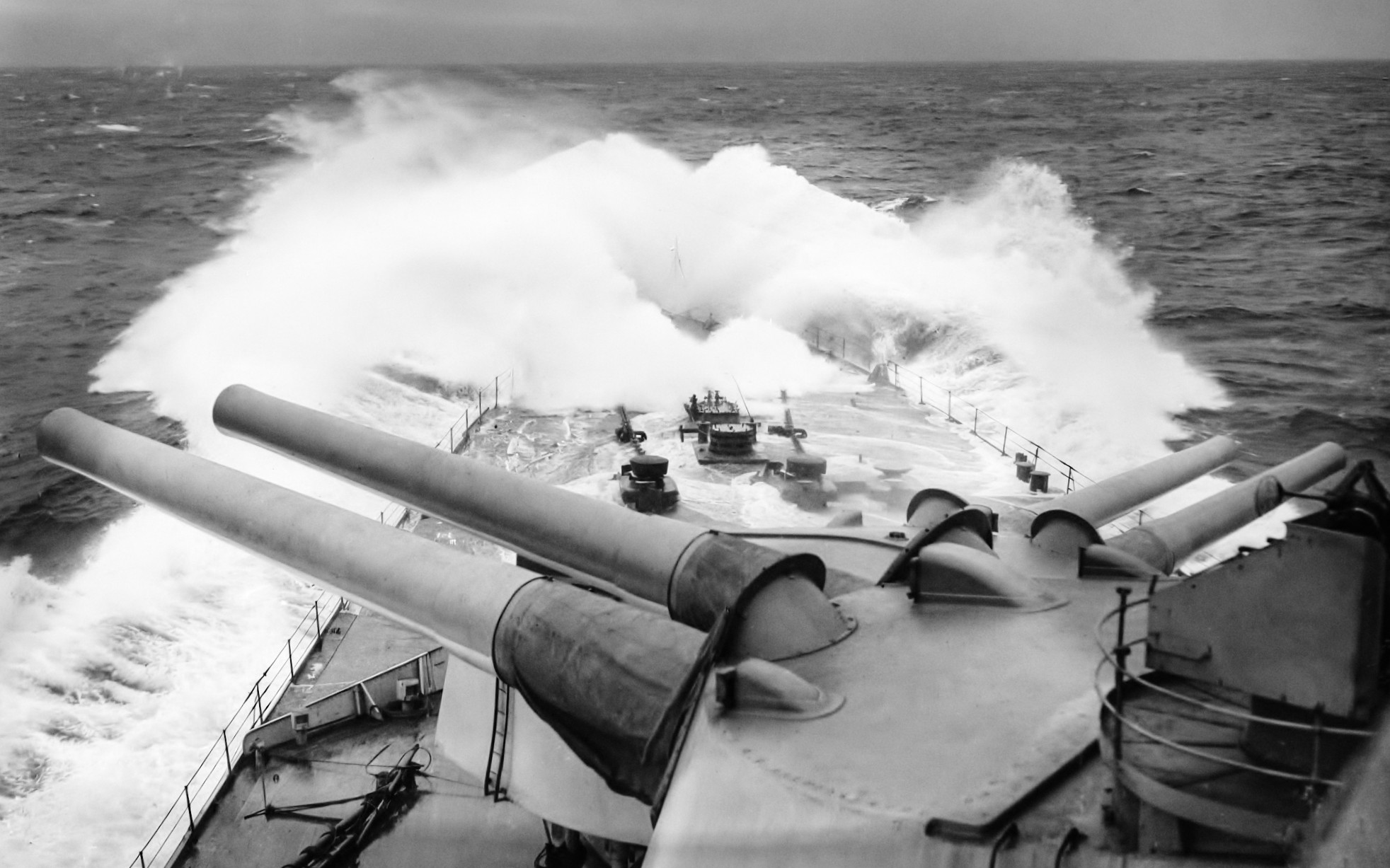
(RN Photo)
Battlecruiser HMS Renown in the Atlantic c1941.
.jpg)
(Allan C. Green Photo)
Battlecruiser HMS Renown in 1920.
.jpg)
(British Library Photo)
Battlecruiser HMS Renown.
.jpg)
(IWM Photo, Q 75273)
Battlecruiser HMS Renown.
_-_btv1b530183224.jpg)
(Bibliothèque nationale de France Photo)
Battlecruiser HMS Renown, Aug 1919.

(USN Photo)
HMS Repulse leading other Royal Navy capital ships during maneuvers, circa the late 1920s. The next ship astern is HMS Renown. The extensive external side armor of Repulse and the larger "bulge" of Renown allow these ships to be readily differentiated.

(IWM Photo, A 18644)
HMS Renown underway off Scapa Flow during her work-up period prior to sailing for the Far East.
_(cropped).jpg)
(USN Photo)
HMS Renown at Plymouth, England, 2 August 1945.
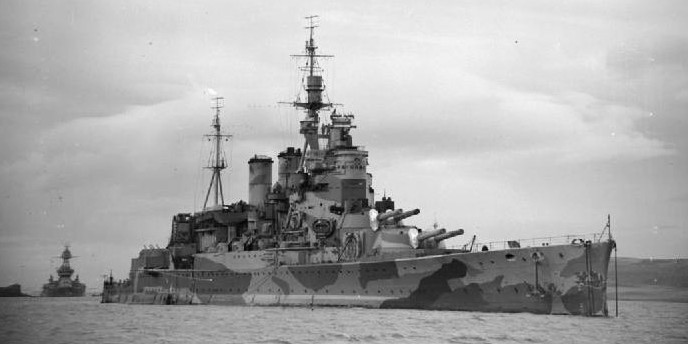
(IWM Photo, A 7322)
HMS Renown at anchor in Hvalfjord, Iceland. View from the aircraft carrier HMS Victorious, during the search for the Tirpitz. The battleship aft of HMS Renown is possibly USS Texas, which arrived in Iceland in late January to escort a convoy back to British waters.d.
HMS Repulse

(City of Vancouver Archives Photo)
HMS Repulse entering Vancouver Harbour during her world tour with HMS Hood and other ships of the Special Service Squadron, 1924.
HMS Repulse was the second of two Renown-class battlecruisers built for the Royal Navy during the First World War. Originally laid down as an improved version of the Revenge-class battleship, her construction was suspended on the outbreak of war because she would not be ready in time. Admiral Lord Fisher, upon becoming First Sea Lord, gained approval for her to resume construction as a battlecruiser that could be built and enter service quickly. The Director of Naval Construction (DNC), Eustace Tennyson-d'Eyncourt, quickly produced an entirely new design to meet Admiral Lord Fisher's requirements and the builders agreed to deliver the ship in 15 months. They did not quite meet that ambitious goal, but the ship was delivered a few months after the Battle of Jutland in 1916. Repulse and her sister ship Renown were the world's fastest capital ships upon completion.
Repulse participated in the Second Battle of Heligoland Bight in 1917, the only combat she saw during the war. She was reconstructed twice between the wars; a reconstruction in the 1920s increased her armour protection and made lesser improvements, while another in the 1930s was much more thorough. Repulse accompanied the battlecruiser Hood during the Cruise of the Special Service Squadron on a round-the-world cruise in 1923 to 1924 and protected international shipping during the Spanish Civil War in 1936 to 1939.
The ship spent the first months of the Second World War hunting for German raiders and blockade runners. She participated in the Norwegian Campaign of April to June 1940 and searched for the Bismarck in 1941. Repulse escorted a troop convoy around the Cape of Good Hope from August to October 1941 and was transferred to the East Indies Command. She was assigned in November to Force Z, which was supposed to deter Japanese aggression against British possessions in the Far East. Repulse and her consort, the battleship Prince of Wales, were sunk by Japanese aircraft on 10 December 1941 when they attempted to intercept landings in British Malaya. In December 2023, a memorial was erected at Teluk Cempedak beach, commemorating both Repulse and Prince of Wales. The memorial was unveiled by King Abdullah of Pahang. (Wikipedia)
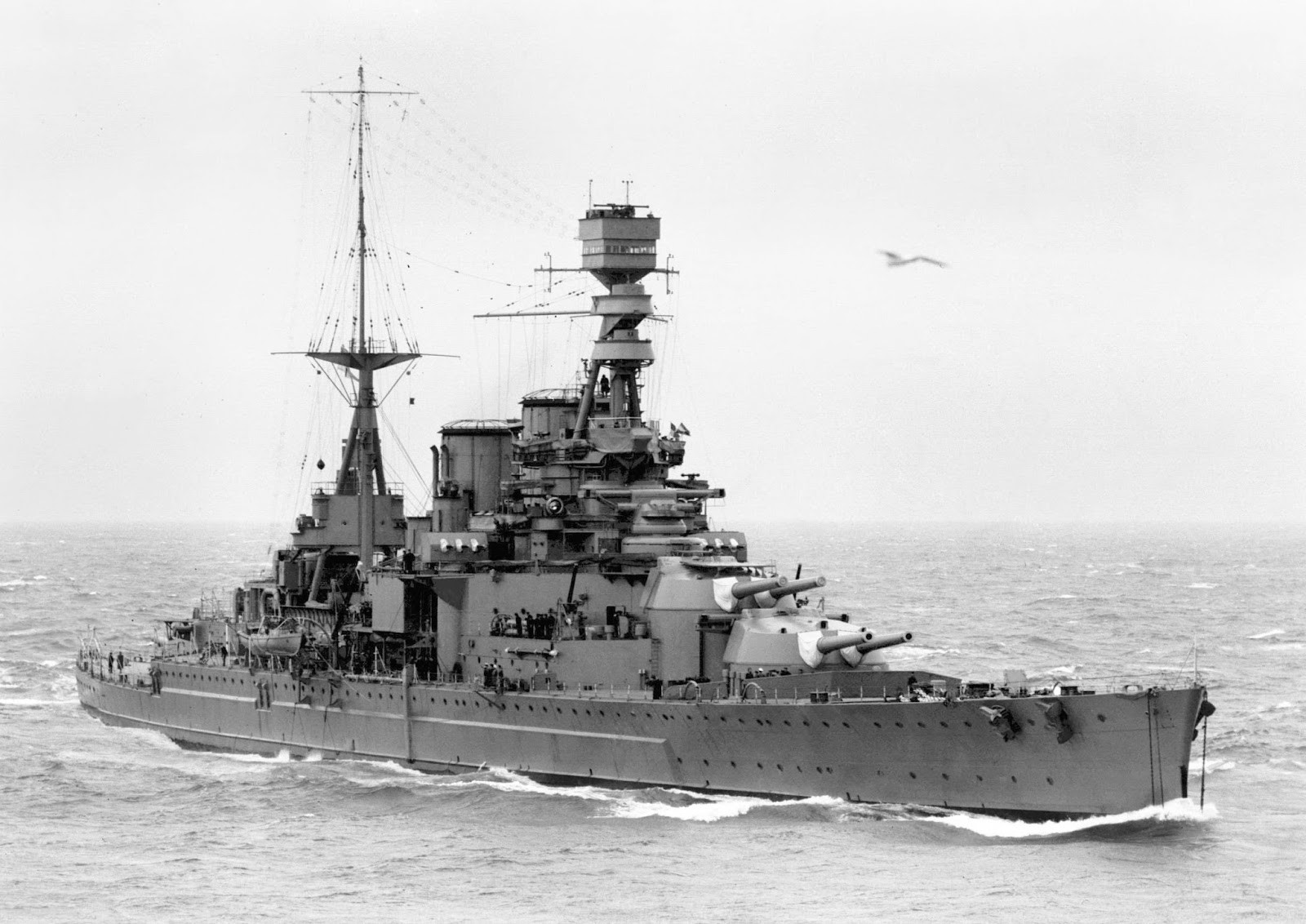
(RN Photo)
HMS Repulse.

(USN Photo)
Royal Navy battlecruiser HMS Repulse photographed circa 1916-17, after post-trials alterations but prior to receiving searchlight towers on her after funnel in place of open searchlight platforms.
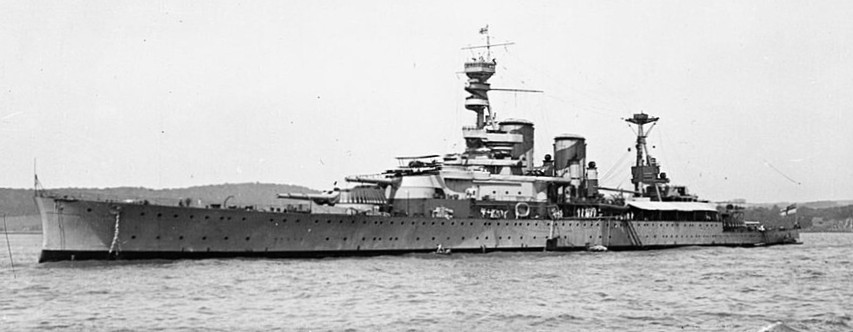
(IWM Photo, SP 720)
HMS Repulse in the Firth of Forth serving as the flagship of the 1st Battlecruiser Squadron, 1918.
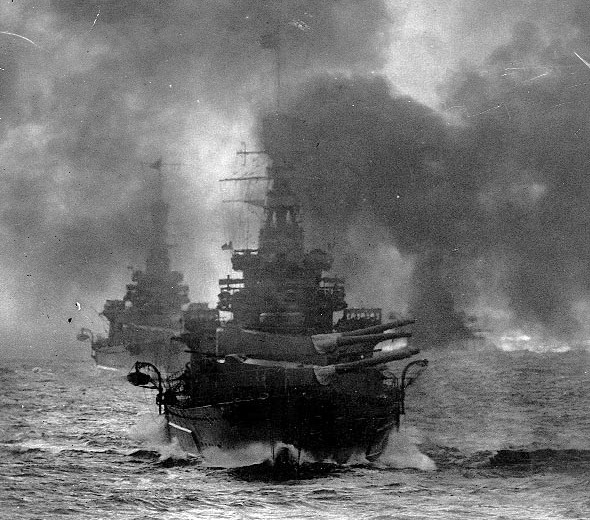
(USN Photo)
Royal Navy battlecruiser HMS Repulse firing her 38.1 cm guns during maneuvers off Portland, England, circa the later 1920s. The next ship astern is HMS Renown. Photographed from HMS Hood.
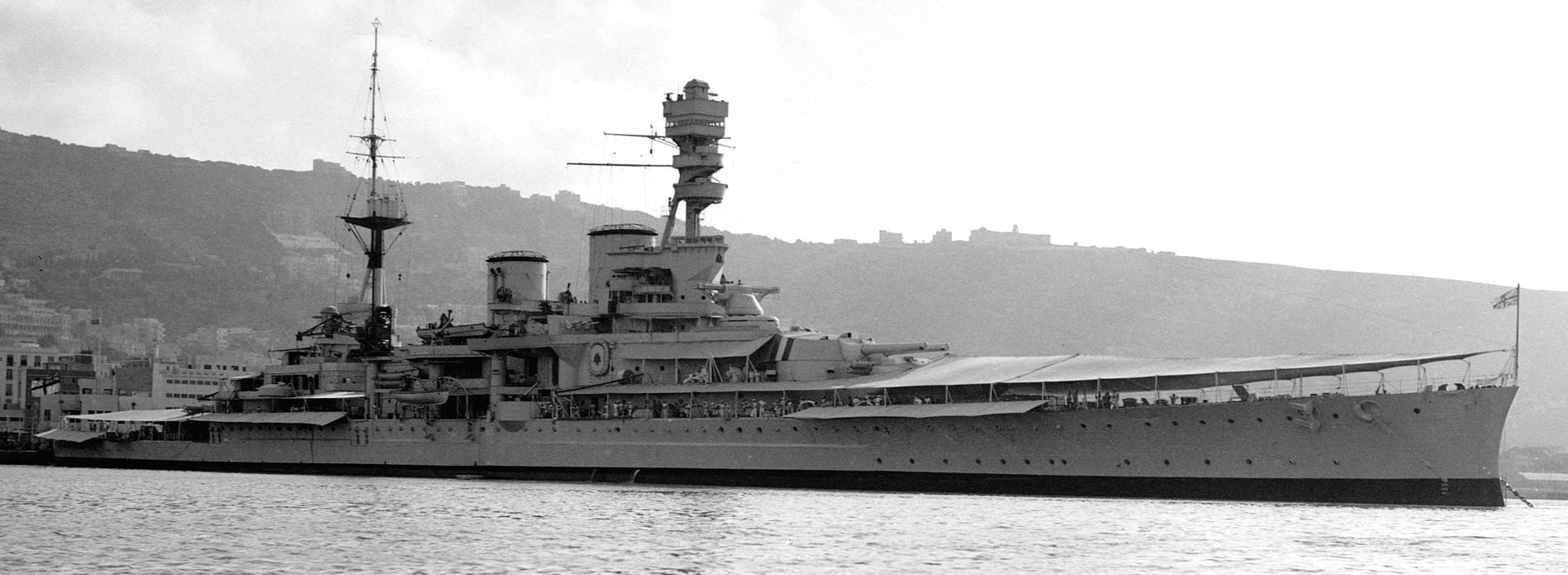
(Library of Congress Photo)
HMS Repulse in Haifa harbour during the Arab Revolt, July 1938.
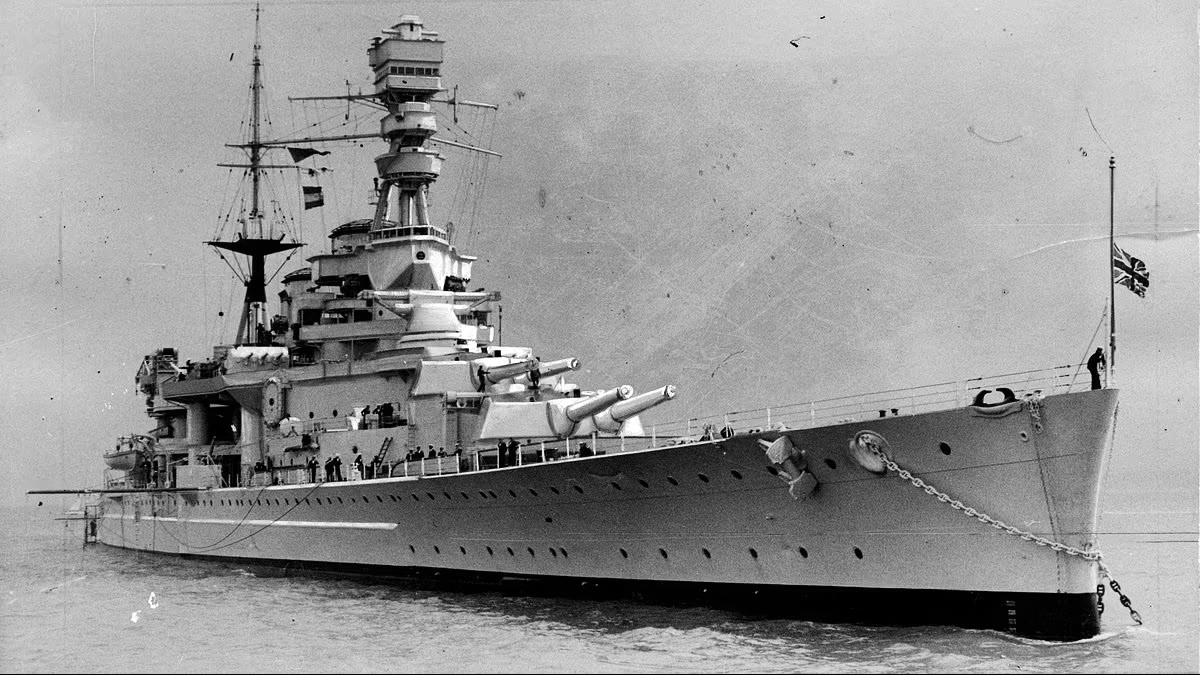
(RN Photo)
HMS Repulse.

(IWM Photo, A 6793)
The battlecruiser HMS Repulse, painted in a dazzle camouflage scheme, while escorting the last troop convoy to reach Singapore. The ship was sunk a few days later with great loss of life on 10 December 1941 by Japanese torpedoes. The sinking, along with that of HMS Prince of Wales, was an appalling blow to British prestige in the Far East.
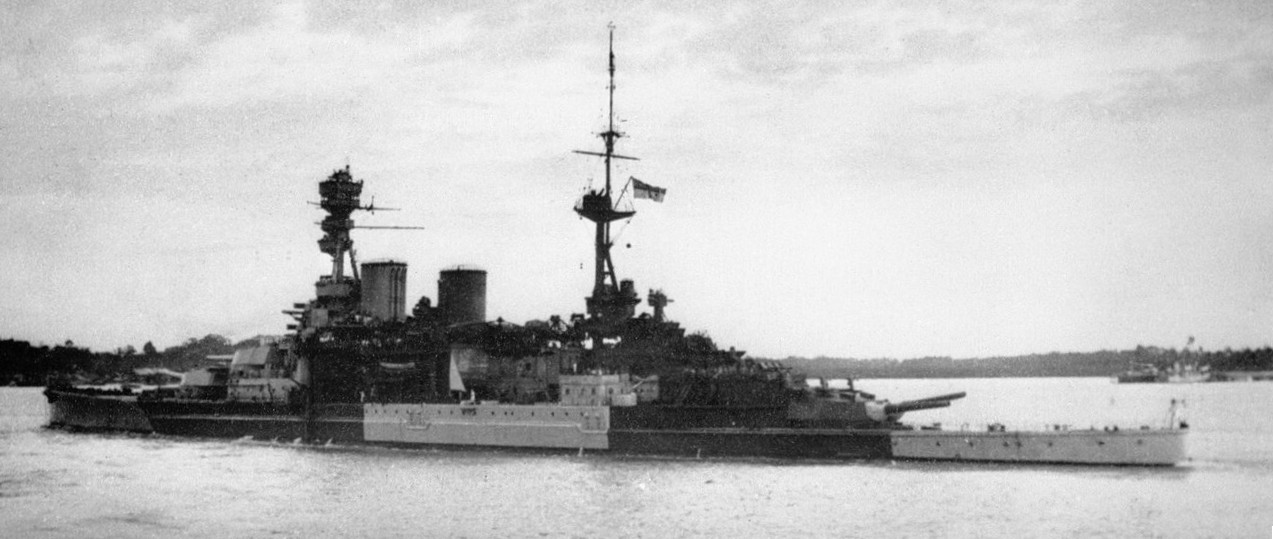
(IWM Photo, A 29069)
British battlecruiser HMS Repulse sailing from Singapore on her last operation, 8 Dec 1941. Two days later she was sunk with great loss of life by Japanese aircraft along with HMS Prince of Wales.
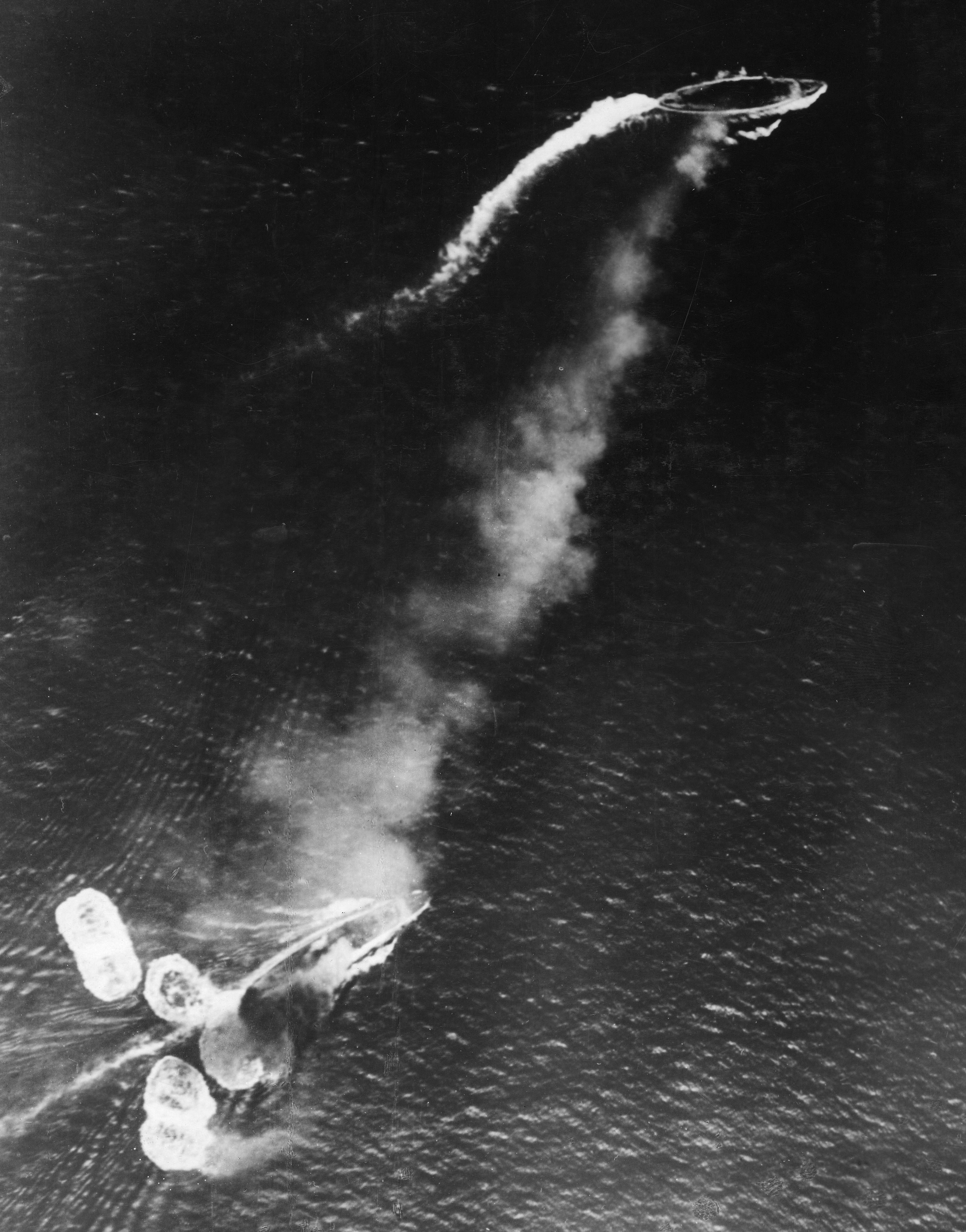
(USN Photo)
Loss of HMS Prince of Wales and HMS Repulse, 10 December 1941: Photograph taken from a Japanese aircraft during the initial high-level bombing attack. The battlecruiser Repulse, near the bottom of the view, has just been hit by one bomb and near-missed by several more. The battleship Prince of Wales is near the top of the image, generating a considerable amount of smoke. The Japanese writing in the lower right states that the photograph was reproduced by authorization of the Navy Ministry.

